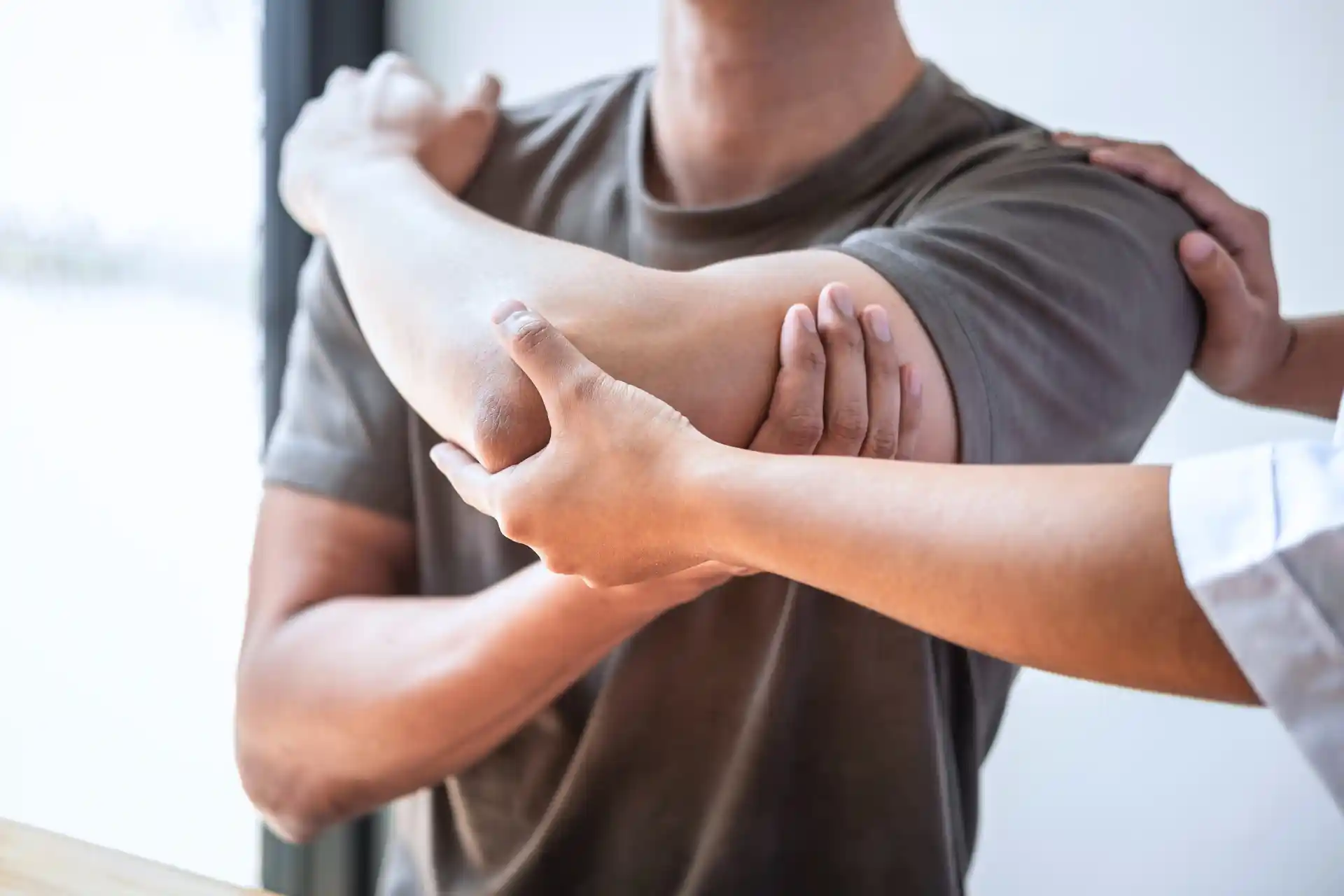Understanding Carpal Tunnel Syndrome
You might wake up at night feeling a tingling or numbness that makes you want to shake out your wrist. This is one of the hallmark signs of carpal tunnel syndrome, a condition that affects roughly 3 out of every 1,000 people each year in the United States (Cleveland Clinic).
Carpal tunnel syndrome happens when the median nerve in your wrist is compressed, causing symptoms like pain, prickling “pins and needles,” and weakness in your hand.
Good news, there are proven ways to find relief, whether you caught symptoms early or you’re looking to recover after more advanced treatments.
Spotting Early Warning Signs
If you wake to tingling fingers or have trouble gripping items, you may be dealing with the earliest signs of this condition. Symptoms like dull wrist pain, slight numbness, or a burning sensation typically appear slowly. They often strike in the middle of routine activities like driving, holding a phone, or reading a newspaper, and may even jolt you from sleep.
- Numb or Tingling Fingers: Your thumb, index, middle, and ring fingers can feel as if they’re “asleep,” leaving you fewer functioning fingers to manage day-to-day tasks.
- Weakness in Grip: Anything from holding a mug to picking up a pen might feel more difficult than usual. You may accidentally drop objects because of reduced hand strength.
- Wrist Aches and Pinpricks: Some people describe pinch-like sensor issues or moderate aches deep within the wrist, not at the skin’s surface. If you’re experiencing these sensations, a carpal tunnel syndrome test can help confirm what’s going on.
One detail to note is that if your pinky finger is numb, that might point to another issue like ulnar tunnel syndrome or even a pinched nerve in elbow. Being aware of these specifics helps you and your provider sort through possible causes.
Read our article on cubital tunnel syndrome, piriformis syndrome and sciatica for other nerve-compression/damage related conditions.
Why The Condition Develops
Carpal tunnel syndrome stems from pressure on the median nerve that runs through a small passageway in your wrist called the carpal tunnel. Many factors can crank up that pressure:
- Repetitive Motions: Typing, assembly-line tasks, or using vibrating tools can stress the wrist. Over time, these movements may worsen existing nerve compression.
- Wrist Anatomy: A fracture, dislocation, or arthritis can alter the shape of your wrist bones, shrinking the tunnel and irritating the median nerve in the process.
- Health Conditions: Inflammatory conditions such as rheumatoid arthritis can add swelling or fluid in your wrist joint, increasing nerve pressure. Hormone fluctuations also contribute, which might be why women experience this problem more often than men (Mayo Clinic).
- Workplace Stressors: Activities that flex your wrists too far up or down, or that require you to grip strongly for extended periods, can exacerbate nerve stress. If you suspect that your workstation is a culprit, consider talking with an occupational therapist or discussing workspace adjustments with a supervisor.
While repetitive motions are one factor, they’re not the only thing causing carpal tunnel syndrome. Wrist structure, hormonal changes, and overall wrist health can all lead to swelling or pressure in the narrow tunnel.
Key Self-Care Strategies
Even if you haven’t been diagnosed, following a few self-care strategies at home can make a big difference in both prevention and recovery.
These treatment options should be treated as a general guideline, always consult with a healthcare professional for personalized guidance on nerve compression treatment that is right for you.
Keep Your Wrist Neutral
One of the fastest ways to reduce nerve pressure is to maintain a natural, handshake-like position with your wrists. Try this while typing or holding a phone:
- Adjust Keyboard And Desk Height: Make sure your forearms sit at the same level as your desk surface. If you’re looking upward or downward at your keyboard, consider a new seat level.
- Use Ergonomic Gear: An ergonomic mouse or keyboard can support the shape of your hands. Some people also place a soft wrist pad at the front edge of the keyboard, but avoid pressing your wrists too hard against it.
- Wear A Splint If Needed: If daytime discomfort is severe, wearing a carpal tunnel brace for short sessions might help you stay in the ideal wrist position.
Take Frequent Hand Breaks
Overuse is a big factor in nerve compression. Whether you’re working, playing an instrument, or cooking, remember to pause:
- Every 30 Minutes: Do a quick set of finger stretches: extend your fingers as wide as possible, then slowly curl them in. Let your hands rest for a few seconds and resume your task.
- Alternate Hands: For tasks like carrying groceries or using tools, switching hands regularly gives each wrist a break. This strategy might seem obvious, but it’s easy to forget when you’re focused on a single project.
Explore Gentle Exercises
Non-strenuous exercises can strengthen the muscles and tendons around your wrist. For instance:
- Wrist Flex And Extend
Rest your forearm on a table palm-down, then gently lower your hand off the table edge, letting it dangle. Slowly raise and lower your hand in a controlled manner. Repeat 10 times, then flip your forearm palm-up and do the same motion. - Nerve Gliding
Some therapists teach gentle median nerve gliding techniques that help reduce irritation. If you’re uncertain how to do them, check out carpal tunnel exercises or consult a physical therapist. - Grip Strengthening
Squeeze a small foam ball or rolled-up sock for five seconds. Release and repeat several times. It can build hand endurance without overexerting your wrist.
Remember: do these exercises in moderation to avoid flaring up any inflammation. If you notice more pain, numbness, or new symptoms, stop and check in with a medical professional.
Seek RELIEF®
RELIEF® is a science-backed, targeted approach that targets dysfunctional fascia—connective tissue that may contribute to nerve compression and carpal tunnel syndrome.
Using a minimally invasive technique called hydrodissection, RELIEF® releases stuck or adhered layers of fascia and soft tissue, that may be putting pressure on nearby nerves. This process may help relieve the tingling, numbness, and pain often associated with conditions like carpal or cubital tunnel syndrome.1,2,3,4,5,6
When Surgery Is Considered
While conservative steps often work, surgery is sometimes recommended if you have severe or long-standing symptoms.
In carpal tunnel release surgery, a surgeon cuts the ligament that’s pressing on the median nerve, creating more space in the carpal tunnel area. This procedure can be done in a few different ways:
- Open Surgery
A single incision on the palm lets the surgeon view the ligament clearly. Recovery time can vary, and you’ll likely need a few weeks before returning to heavy hand use. - Endoscopic Surgery
Instead of a single, larger incision, the surgeon uses one or two small cuts to operate with a tiny camera. Research suggests you may have less initial pain than with open surgery, but both approaches aim for the same outcome (Mayo Clinic).
If your doctor suggests surgery, ask about how quickly you can resume daily tasks and whether you’ll need additional physical therapy.
It’s also wise to chat about how well you can expect your grip strength and sensation to return. Some people see near-complete relief within weeks, while others might need months of incremental improvement.
If you’re curious to learn more, see carpal tunnel surgery for an overview of what to expect and how to prepare.
Protecting Your Hands After Treatment
For the best long-term results, you’ll want to pay attention to everyday wrist care. It’s easy to return to old habits that could re-ignite nerve compression. In your recovery phase:
- Ease Back Into Activities
Your doctor or surgeon may advise you to gradually reintroduce heavier tasks like lifting boxes or using certain tools. Jumping straight back in without letting your tissues heal can slow down progress. - Wear A Brace If Recommended
Some surgeons have you use a brace or bandage after surgery to stabilize your wrist. Follow those guidelines carefully to avoid complications. If you didn’t have surgery but are still healing, occasional bracing can be helpful for manual tasks. - Track Your Symptoms
You might feel twinges of pain, slight numbness, or any lingering discomfort. Keep a journal to note patterns or triggers so you can adjust accordingly. If frequent numbness or weakness returns, a follow-up appointment may be needed. - Incorporate Preventive Habits
Keep practicing gentle wrist exercises and taking short breaks to stretch. If you’re typing at a computer, position your monitor at eye level and your forearms parallel to the desk. These subtle changes protect against further median nerve compression.
Your wrists are easier to maintain with consistent care, so don’t wait for pain to return before you take action.
Recap And Next Step
Carpal tunnel syndrome can creep up on you or develop from years of repeated wrist motion. Either way, rehabilitation often comes down to combining early detection, sensible self-care, and, in more serious cases, surgery.
If you suspect something else is at play, like nerve compression syndrome or carpal tunnel vs arthritis, it’s worth chatting with a professional to confirm your diagnosis.
- Recognize Early Signs
Numbness, tingling, or pinprick sensations are early flags that your median nerve might be under pressure. - Tweak Your Routines
Wearing a brace, taking frequent hand breaks, and keeping a neutral wrist can prevent further irritation. - Try Conservative Methods First
Many people see improvement with wrist splints, mild exercises, and NSAIDs for short-term pain relief. - Consider Surgery If Needed
Severe or long-term cases may require a specialist to relieve the pressure on your nerve. - Protect Your Wrists Moving Forward
Keep healthy habits, like regular breaks and ergonomic setups, so you can avoid setbacks and maintain strong, comfortable hands.
Taking active steps now will save you frustration and help your hands regain function. Whether you need a few small adjustments or a more detailed treatment plan, you have more control than you might think.
If you’re ready, start with an easy wrist stretch or even an appointment to discuss carpal tunnel syndrome treatments in depth. You’ve got this, and every small step you take can lead you closer to the relief you deserve.
If you are in the area and looking for a Miami wrist pain specialist, contact us today to schedule a consultation and learn more about how RELIEF® may help with compressed nerves and cubital/carpal tunnel symptoms.


%20(1).webp)



.svg)